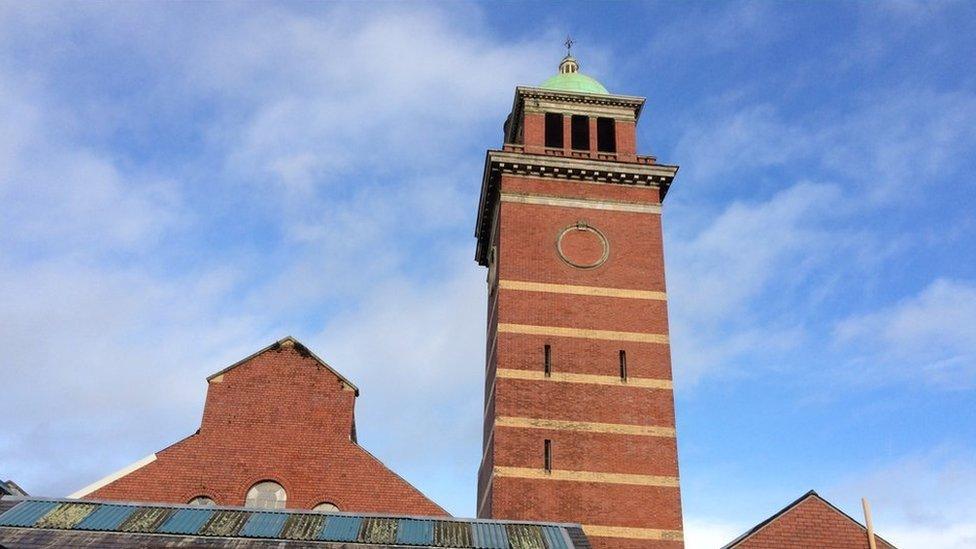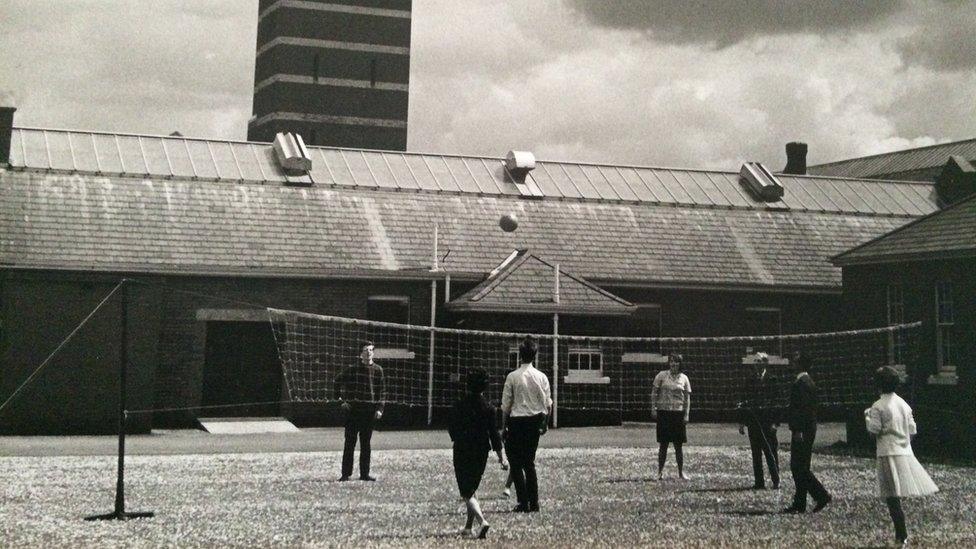Whitchurch Hospital: The 'spooky place' that is set to close
- Published
'You can't help but be scared a little bit,' says psychiatrist Dr Neil Jones
The grounds contained a dance hall, 800-seat church, bandstands and summer houses, while employees performed in the staff orchestra.
With construction costs of £350,000 (about £37.5m in today's money), these could be details of a grand early 20th Century manor for a rich landowner.
It was in fact a description of a 1908 Cardiff mental hospital - at the time so cutting edge the man in charge did not want it referred to by the more epithet of the day "lunatic asylum."
On Thursday, a state-of-the-art replacement for a crumbling Whitchurch Hospital opens at Llandough in the Vale of Glamorgan.
But there was a time when it was considered modern and cutting edge itself.
"People would be spending their lives there, so it had to function like a self-contained society," said Mike Jones, a former nurse and member of the hospital's historical society.
"Two large pieces of farmland were purchased, enough to grow crops on and keep livestock.
"It was self-sufficient, with a butcher's, a bakery, while patients worked on the farm."
With a stigma attached to mental health, that such an outlay was made by the local council owed much to the influence of its first medical superintendent, Edwin Goodall.
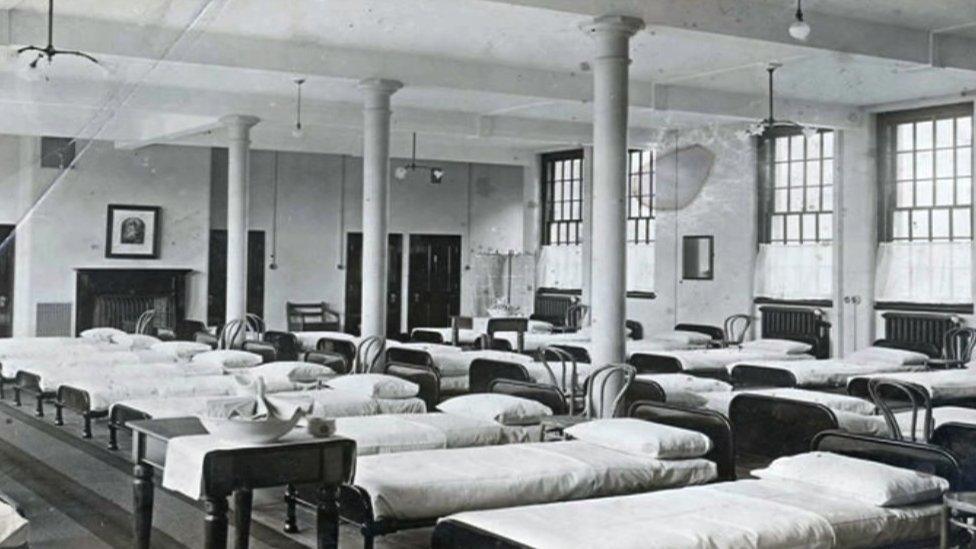
Patients will start transferring to the new £88m adult mental health unit in Llandough and Whitchurch will close on 29 April after 108 years
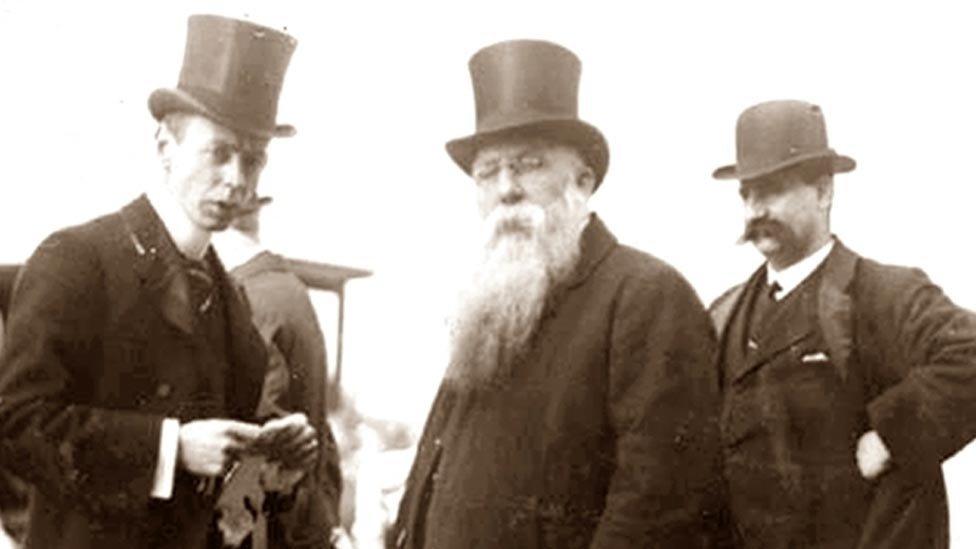
Dr Edwin Goodall (left) in 1908, had a lot of influence in the local council and helped ensure Whitchurch Hospital was one of the best in the UK when it was built

The hospital's orchestra in 1910, which would perform for patients
Initially, after it opened in 1908, around 750 patients were treated for conditions like moral imbecility (women who had children out of wedlock), masturbatory insanity and forms of schizophrenia (where delusional people were locked up indefinitely).
Dr Goodall championed the idea that mental illness came from physical problems that caused changes in the brain and by isolating these, you could find a cure.
His research saw post-mortem examinations of the brain to diagnose Alzheimer's and analysis of faeces and urine.
Treatments included hydrotherapy, with prolonged baths to calm patients, and using mosquitoes to induce the potentially deadly tropical disease malaria.
This was because the high temperatures it caused killed the parasite responsible for syphilis, known as 'paralysis of the insane' in its later stages.
Advanced nurse Kelly Panniers has spent 16 years working at Whitchurch Hospital
With some of the best facilities in the UK and a 150ft (45m) water tower that could be used as a lookout, it was taken over during the war years to treat injured soldiers.
This made it one of the first places where "shellshock", or post-traumatic stress disorder, was witnessed.
"I can remember walking nearer and seeing the water tower silhouetted against the sky," said Mr Jones about his first day as a student nurse in 1968.
"It was a strange feeling like I was coming home.
"The people who have stayed are ingrained in the walls, there are a lot of ghosts of people that seep into you.
"It's a paradox because mental illness has such a stigma, but there is a lot of warmth in the building."
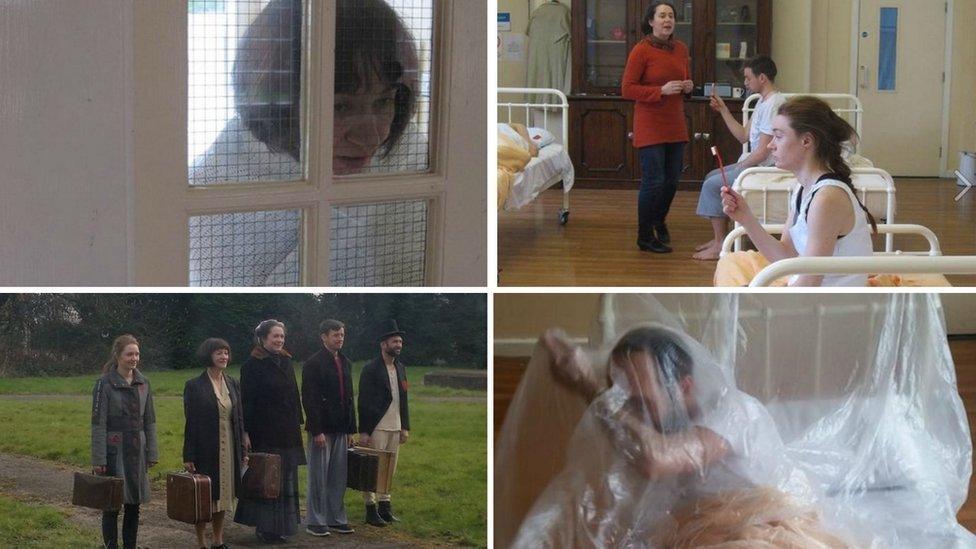
A play called Momento(s) of Leaving was performed on the wards between 7-12 March, with Elaine Paton (top left pic) as artistic director
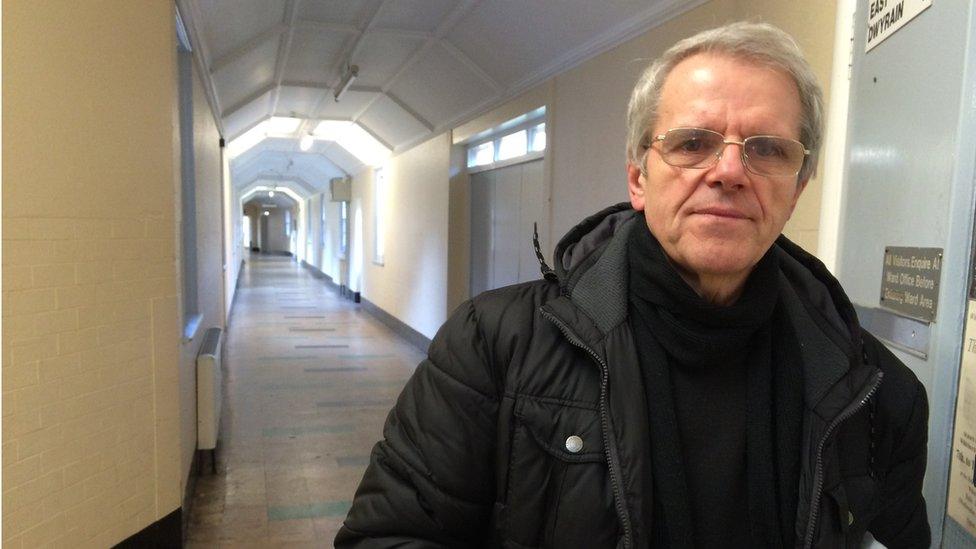
Around two miles of corridors connect the different parts of the hospital, where Mike Jones worked as a nurse before becoming a lecturer in 1981
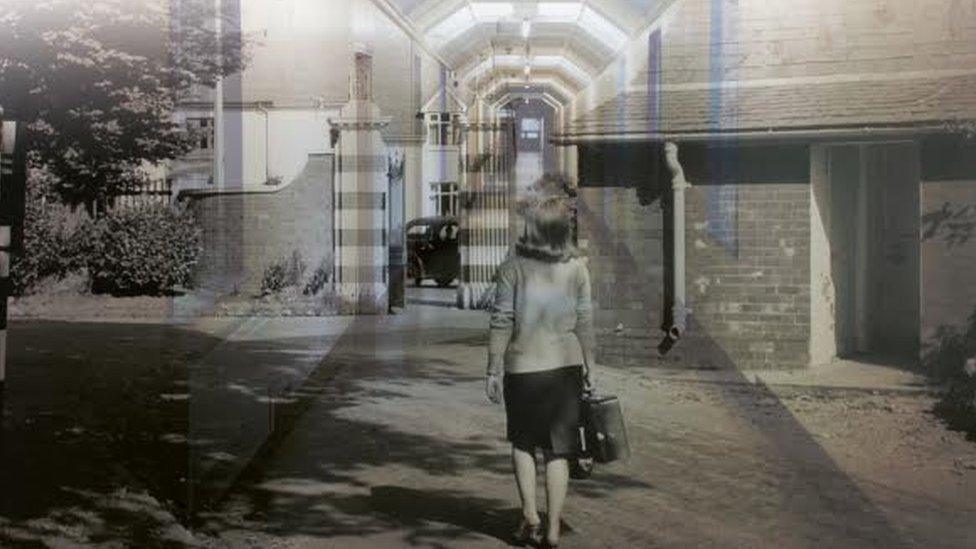
Momento(s) of Leaving, supported by bodies including the Arts Council of Wales, gave 40 people a chance to see the hospital during each performance
There is a long history of mental illness in Elaine Paton's family, with both her parents treated at Whitchurch for depression.
While it is a place she came to know well, she can remember growing up in Cardiff with people referring to "the spooky place" and "loony bin".
At the time, as well as little appreciation of its role, there was also limited understanding of her own early battles with depression.
As an 18-year-old in 1972, she wrote in her diary that she was unable to stop crying - with doctors not recognising an underlying illness in the "weepy teen".
"In 1980, I can remember going to Whitchurch one last time before going to Australia for a year," said the writer and performer.
"It was cold and raining. Saying goodbye to a parent in any hospital is tough, let alone a mental hospital."
"Horror movie"
While the year away turned into 30, Ms Paton's life "has come full circle", as she returned to Whitchurch to act as artistic director on a production marking its closure.
"Even though the building can't look after people any more and is falling down, there is a great sense of loss.
"I wanted to depict what it is like to be mentally ill - it is invisible, so people can't understand.
"The production used dancers to illustrate this through balance which is so important to them. When you're mentally unwell, you're off balance."
While she said the dated facility can appear like "something out of a black and white gothic horror movie", underneath there is "a wonderful warmth".
"Edwin Goodall helped change the attitude - from locking people up in Victorian institutions, to trying to get them better during Edwardian times.
"It's very sad it's been allowed to disintegrate.
"But hopefully moving to this bright, new modern place will help get rid of stigma even further," she said.
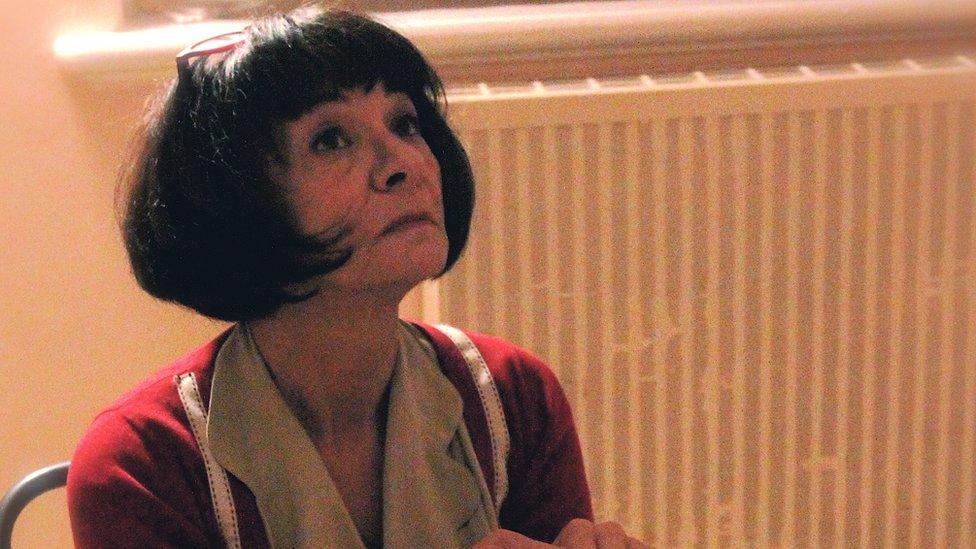
Elaine Paton wanted to work on a production focusing on mental health. Whitchurch's closure gave her the idea of performing on a disused ward

Whitchurch Hospital "end of an era"
While former clinical director Dr Morfydd Keen is nostalgic about her 30 years at Whitchurch, she agrees it is time for care to move away from the dated facility.
"There was a lady there for decades, who would just sit by the front door and ask 'you going to town love?', to everyone that passed," she said.
"She just seemed desperate to go out. In the end, I said to one of the nurses 'why don't you just get her in a taxi and take her out for the day?'
"But they'd tried many times and would get as far as the front gates before she told them to turn back."
Dr Keen described it as an "unintended consequence" that people became "institutionalised" and never left, which is why community care is now more common.
She worked on the addiction ward, dealing with drug-takers and alcoholics.
"We had some good results, but a lot died, although only two on the ward - an alcoholic from a heart attack and one person hung themselves," she said.
"They had to want to stop. You can't stop an addiction just because your family wants you to."
When she retired in 1999, hospital staff asked if they could rename the ward after her.
"I said 'yes, as long as you look after me when I'm old'. Unfortunately, they won't be able to now because it won't be there."

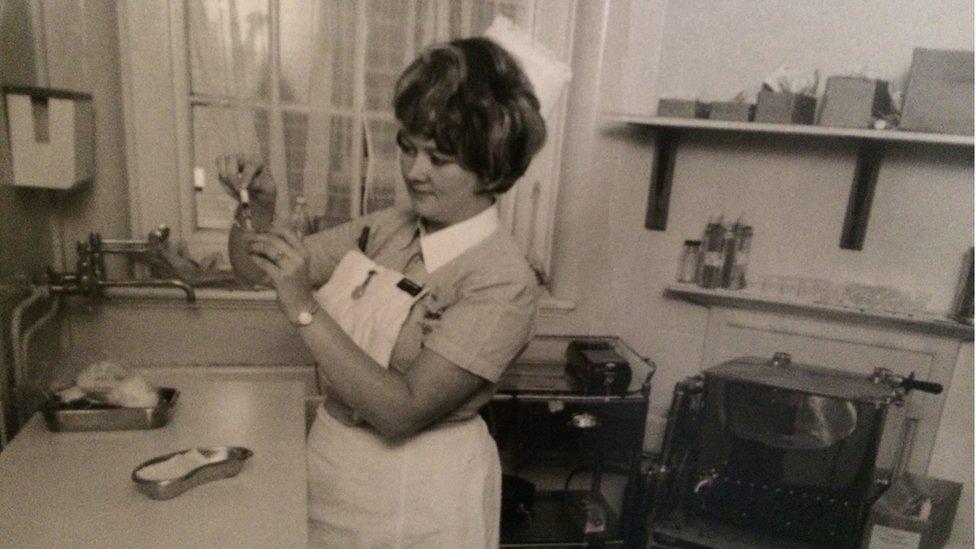
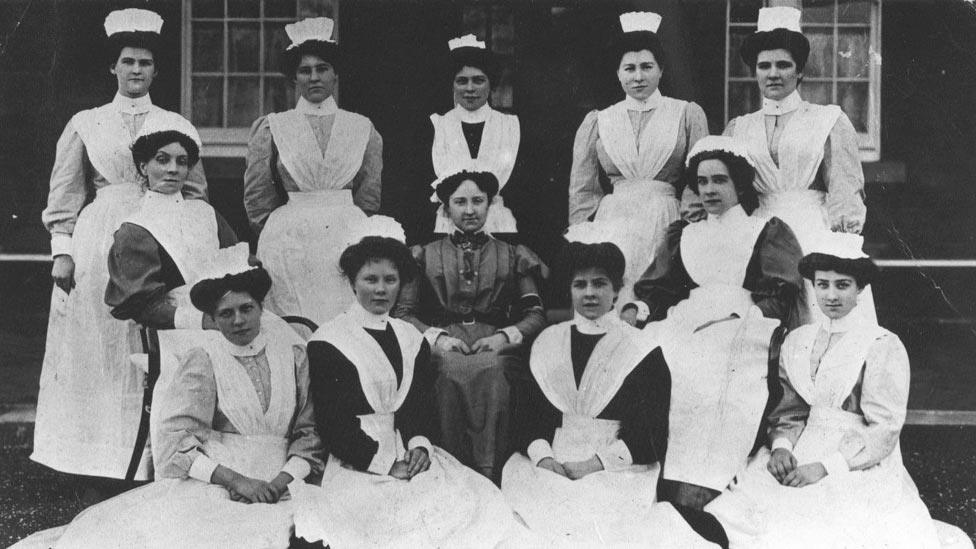
First Matron of Whitchurch Hospital Florence Raynes with nursing staff (1908 - 1910).
